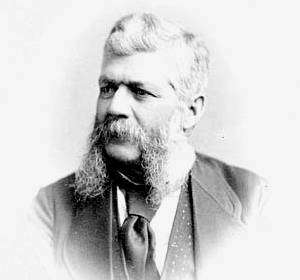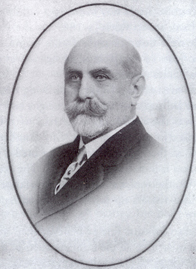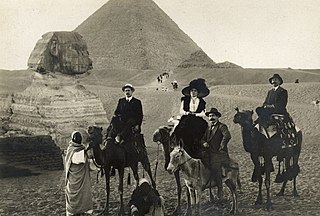Related Research Articles

Sir William Edmond Logan, FRSE FRS FGS, was a Canadian-born geologist and the founder and first director of the Geological Survey of Canada.

Lambton County is a county in Southwestern Ontario, Canada. It is bordered on the north by Lake Huron, which is drained by the St. Clair River, the county's western border and part of the Canada-United States border. To the south is Lake Saint Clair and Chatham-Kent. Lambton County's northeastern border follows the Ausable River and Parkhill Creek north until it reaches Lake Huron at the beach community of Grand Bend. The county seat is in the Town of Plympton-Wyoming.

Imperial Oil Limited is a Canadian petroleum company. It is Canada's second-largest integrated oil company. It is majority-owned by American oil company ExxonMobil, with a 69.6% ownership stake in the company. It is a producer of crude oil, diluted bitumen, and natural gas. Imperial Oil is one of Canada's major petroleum refiners and petrochemical producers. It supplies Esso-brand service stations.

Petrolia is a town in southwestern Ontario, Canada. It is part of Lambton County and is surrounded by Enniskillen Township. It is billed as "Canada's Victorian Oil Town" and is often credited with starting the oil industry in North America, a claim shared with the nearby town of Oil Springs.

The petroleum industry, also known as the oil industry or the oil patch, includes the global processes of exploration, extraction, refining, transportation, and marketing of petroleum products. The largest volume products of the industry are fuel oil and gasoline (petrol). Petroleum is also the raw material for many chemical products, including pharmaceuticals, solvents, fertilizers, pesticides, synthetic fragrances, and plastics. The industry is usually divided into three major components: upstream, midstream, and downstream. Upstream regards exploration and extraction of crude oil, midstream encompasses transportation and storage of crude, and downstream concerns refining crude oil into various end products.

Thomas Sterry Hunt was an American geologist and chemist.

Alexander Murray, was a Scottish geologist. Murray is best known for his career with the Geological Survey of Canada and the Geological Survey of Newfoundland.

A blowout is the uncontrolled release of crude oil and/or natural gas from an oil well or gas well after pressure control systems have failed. Modern wells have blowout preventers intended to prevent such an occurrence. An accidental spark during a blowout can lead to a catastrophic oil or gas fire.

James Miller Williams was a Canadian-American businessman and politician. Williams is best known for establishing the first commercially successful oil well in 1858 and igniting the first oil boom in North America. Williams is commonly viewed as the father of the petroleum industry in Canada.

Oil Springs is a village in Lambton County, Ontario, Canada, located along Former Provincial Highway 21 south of Oil City. The village, an enclave within Enniskillen Township, is the site of North America's first commercial oil well. It is home to the Oil Museum of Canada.
The Canadian petroleum industry arose in parallel with that of the United States. Because of Canada's unique geography, geology, resources and patterns of settlement, however, it developed in different ways. The evolution of the petroleum sector has been a key factor in the history of Canada, and helps illustrate how the country became quite distinct from her neighbour to the south.
Alfred Thomas Gurd was an Ontario farmer, entrepreneur and political figure. He represented Lambton West in the Legislative Assembly of Ontario from 1894 to 1898 as a Conservative-Protestant Protective Association member.

John Henry Fairbank was variously a surveyor, oilman, inventor, banker, politician and fire chief in Lambton County, Ontario. Fairbank is best known for his invention of the jerker-line pumping system, which quickly spread across the world its introduction in the mid-1860s. Fairbank Oil, established by Fairbank in 1861, is the oldest continually operating petroleum company, and the company's property, known as the "First Commercial Oil Field", is included in the List of National Historic Sites of Canada in Ontario.
Charles Nelson Tripp was a bitumen businessman in Ontario. Tripp is best known for his role in the formation of the International Mining and Manufacturing Company in 1854, the world's first incorporated oil company. Tripp and his brother Henry were among the first to exploit Enniskillen Township's bitumen deposits following Thomas Sterry Hunt and Alexander Murray's reports on the region and helped kickstart the first oil boom in Enniskillen Township.

William Henry McGarvey was a Canadian business magnate, entrepreneur and politician. McGarvey is best known for his exploits in Galicia, where he operated a highly successful petroleum company. McGarvey was one of the most successful "foreign drillers" of Petrolia, becoming a multimillionaire before the outbreak of the First World War destroyed his business.
Major Charles Oliver Fairbank (1858–1925) was a Canadian oilman and military officer and M.D. who served in the First World War.

Jacob Lewis Englehart was a Canadian-American business magnate, entrepreneur and philanthropist. Englehart is best known for his role in the formation of Imperial Oil in 1880 to combat the growing influence of John D. Rockefeller's Standard Oil. Englehart was one of the most successful oil refiners in Canada during the 1800s and oversaw the completion of the Temiskaming and North Ontario Railway.

Hugh Nixon Shaw is an Irish-Canadian oil producer and businessman. Shaw is best known for being misidentified as the discoverer of the Shaw well, Canada's first oil gusher, on January 16, 1862.

The International Drillers is the name given to the more than 500 drillers from Lambton County who worked in oil fields across the world between December 1873 to the mid-1940s. Many of the International Drillers grew up learning the oil business in Enniskillen County and provided the skilled labour, expertise and technology necessary for the development of the global petroleum industry.

On March 14, 1863, a race riot broke out in Oil Springs, located on what is now known as Centre Street in Sarnia-Lambton County, Ontario. The race riot consisted of 80-100 white Americans coming together and burning down the homes of black Canadians on what is now Centre Street, causing them to flee to safety in the woods The reason behind the race riot was in large part due to white labourer's being outraged by black labourer's willingness to work for lower wages.
References
- 1 2 3 4 5 6 7 8 Gray, Earle. (2008). Ontario's petroleum legacy : the birth, evolution and challenges of a global industry. Edmonton: Heritage Community Foundation. p. 32. ISBN 978-1-4593-3970-5. OCLC 842999352.
- 1 2 3 4 "The Oil Wells of Enniskillen". The Toronto Globe. Jan 28, 1862.
- ↑ Burr, Christina. (2006). Canada's Victorian Oil Town : the Transformation of Petrolia from Resource Town into a Victorian Community. Montreal, London, Kingston and Ithaca: McGill-Queen's University Press. p. 61. ISBN 978-0-7735-7590-5. OCLC 951204013.
- 1 2 3 4 5 6 "A Promising Trade". The Toronto Globe. February 5, 1862.
- 1 2 Cronin, Fergus (April 1959). "Who Really Drilled the Great Shaw Well?" (PDF). Imperial Oil Review. 43: 28.
- ↑ Burr, Christina. (2006). Canada's Victorian Oil Town : the Transformation of Petrolia from Resource Town into a Victorian Community. Montreal, Kingston, London and Ithaca: McGill-Queen's University Press. p. 76. ISBN 978-0-7735-7590-5. OCLC 951204013.
- ↑ May, Gary. (1998). Hard oiler! : the story of canadians' quest for oil at home and abroad. Toronto: Dundurn. p. 44. ISBN 978-1-4597-1312-3. OCLC 1127560811.
- 1 2 Gray, Earle. (2008). Ontario's petroleum legacy : the birth, evolution and challenges of a global industry. Edmonton: Heritage Community Foundation. p. 33. ISBN 978-1-4593-3970-5. OCLC 842999352.
- 1 2 "Items from the Oil Springs". Toronto Globe. January 21, 1863.
- ↑ Burr, Christina. (2006). Canada's Victorian Oil Town : the Transformation of Petrolia from Resource Town into a Victorian Community. Montreal, Kingston, London and Ithaca: McGill-Queen's University Press. p. 77. ISBN 978-0-7735-7590-5. OCLC 951204013.
- ↑ "Oil Items". Sarnia Observer. May 11, 1866.
- 1 2 "Death of a Well-Known Oil Man". The Sarnia Observer. July 21, 1871.
- 1 2 3 4 5 6 "What is True History? The Shaw Gusher Question". Lambton County Museums. Retrieved 2020-06-25.